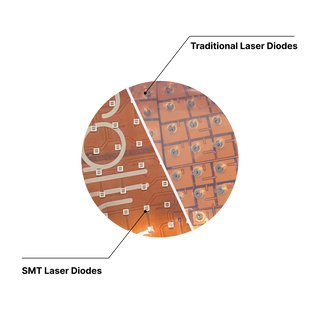The role of hormones and hair loss are intrinsically linked. It is no wonder that many women notice a change in their hair volume during menopause. Menopause causes changes to hormonal balance with a drastic decrease in production of estrogen. Androgenetic Alopecia, the primary cause of hair loss in men AND women is - in fact - linked to a hormone. It affects 30 million women in the United States alone, according to the National Library of Medicine.
What Causes Hair Loss in Women?
The presence of DHT, an androgen hormone derived from testosterone, combined with genetics, are responsible for the most common type of hair loss known as androgenetic alopecia (AGA). A form of testosterone called DHT, is produced in the skin of both men and women. When DHT is present on the scalp, it causes hair loss in those genetically susceptible by continuously shrinking healthy follicles. Shrinking hair follicles produce weaker, thinner hair with each cycle of growth. Eventually a follicle may stop producing any hair altogether. Researchers have confirmed that a genetic variation in the androgen receptor gene, is involved in AGA, making receptors more easily stimulated by the presence of androgens than normal. This AR gene variation is inherited from any family member on both maternal and paternal sides. Pattern hair loss is progressive. The earlier you take control, the better the results.
Does Menopause cause Androgenetic Alopecia?
While menopause, or even a hysterectomy, are not directly responsible for female pattern balding, it can trigger the onset of androgenetic alopecia to those with the inherited trait due to the change in hormonal balance.
What Does Female Pattern Hair Loss Look Like?
Unlike male pattern balding, female patterns of hair loss are characterized with an overall thinning which is diffuse. The hair becomes thinner at the top with more scalp visible as the middle parts widens. It rarely leads to complete baldness but is no less traumatic.

The chart above illustrates the different classifications of hair loss in women with hereditary hair loss. Laser therapy like Xtrallux is an option for women in the stages marked green above. Read full product information and indications for use on our product pages.
What Treatments Exist for Female Pattern Balding?
The good news is that there is medical intervention available for female pattern hair loss. Minoxidil is a viable treatment option but is messy and inconvenient for styling of women’s hair as it requires daily topical application. Laser therapy is a great treatment option because it is non-messy, simple to use and is safe, and it does not disrupt hair styling with the need for daily washing. The key to any treatment regimen is compliance and selecting an option that is practical for your lifestyle. The sooner you intervene, the more follicles that can be treated before they are no longer viable.






